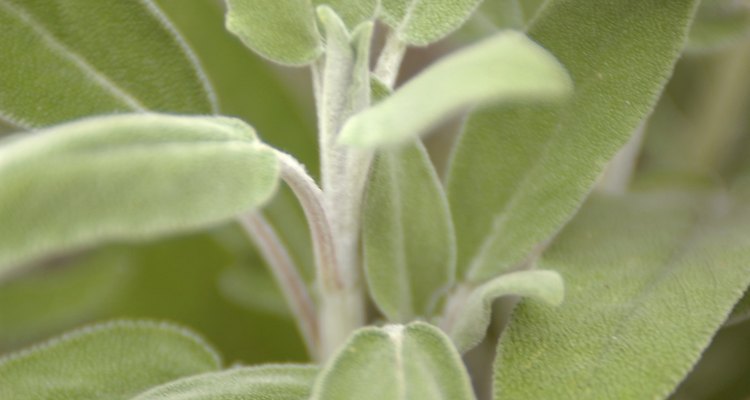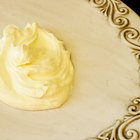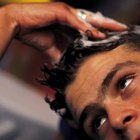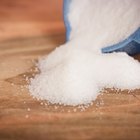
Dorling Kindersley/Dorling Kindersley RF/Getty Images
Sage is a common spice used in kitchens all over the world. The Latin name, Salvia officinalis, means "to save," reflecting the curative properties the herb was believed to possess. Sage is a traditional topical treatment for graying hair, and the herb may promote new hair growth, according to the University of Maryland Medical Center. Sage has antibiotic, anti-allergic and antiseptic properties and is a source of magnesium, zinc, potassium, and vitamins B and C. Before using sage as a beauty treatment, consult your doctor to diagnose the cause of your thinning hair, as it could be the result of a health condition.
Use concentrated sage tea as a hair rinse. Pour 1 cup of boiling water over 1 tbsp. of dried sage leaves. Allow the mixture to cool and strain through a coffee filter to remove the sage leaves. Wash and rinse your hair as usual, and then pour this sage tea over your scalp as a final rinse.
Apply sage tincture as a spot treatment for thinning hair. After washing and rinsing your hair, apply one drop of sage tincture to problem areas on your scalp. Massage the sage gently into your scalp while your hair is still damp. Discontinue if the alcohol in the tincture causes scalp irritation.
Rub a mixture of sage tincture and olive oil into your scalp as a nightly treatment. Add three or four drops of sage tincture to 1 tbsp. of olive oil. Massage the oil mixture into the scalp where the hair is thinning until it is well-absorbed. Wash your hair as usual in the morning.
Infuse jojoba oil with sage to create an alternate nightly scalp treatment. Jojoba oil is a traditional Native American treatment to promote hair growth. Place 1 cup of sage leaves with 2 cups of jojoba oil in a blender. Blend at high speed for three minutes or until the mixture is liquefied. Store the oil in a glass jar in the refrigerator and use it as a nightly scalp treatment.
Related Articles

Ayurvedic Treatment for Hair Removal

How to Remove Dandruff With Baking ...

How to Make Organic Shampoo at Home

How to Make Homemade Dead-Sea Salts ...

How to Make Calendula Tea

How to Make Organic Shampoo & ...

How to Use Shea Butter on Natural Hair

How to Use Cucumber To Make a Hair Rinse

Homemade Conditioner With Jojoba Oil

How to Add Saw Palmetto to Your Shampoo

Benefits of Soybean Oil for Hair

Can You Use Castor Oil for Psoriasis on ...

Burdock Root for Acne

Basil for Hair Growth

How to Make a Homemade Water-Based Hair ...

What Are the Treatments for Hair ...

How to Get Elmer's Glue Out of Hair

How to Make Natural Sugar Body Scrubs

Homemade Natural Unscented Glycerin ...

How to Use Camellia Oil for Hair
References
- University of Maryland Medical Center: Hair Disorders
- "Today's Herbal Health"; M.H. Louise Tenney; 1992
- Encyclopedia.com: Sage
Writer Bio
Stacey Anderson began writing in 1989. She published articles in “Teratology,” “Canadian Journal of Public Health” and the "Canadian Medical Association Journal” during her time in medical genetics studying birth defects. She has an interest in psychology, senior health and maternal and child health. Anderson holds a Bachelor of Science in psychology with a minor in biology from the University of Calgary.
Photo Credits
Dorling Kindersley/Dorling Kindersley RF/Getty Images